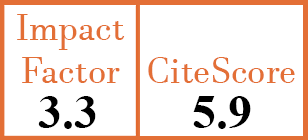Diagnosis
The diagnostic value of serum YKL-40 for myocardial involvement in immune-mediated necrotising myopathy
L. Xu1, M.-G. Yang2, S. Hu3, Y. Li4, B.-T. Bu5, S. Ji6
- Department of Neurology, Tongji Hospital of Tongji Medical College, Huazhong University of Science and Technology, Wuhan, China.
- Department of Neurology, Tongji Hospital of Tongji Medical College, Huazhong University of Science and Technology, Wuhan, China.
- Department of Neurology, Taikang Tongji Hospital, Wuhan, China.
- Department of Neurology, Tongji Hospital of Tongji Medical College, Huazhong University of Science and Technology, Wuhan, China.
- Department of Neurology, Tongji Hospital of Tongji Medical College, Huazhong University of Science and Technology, Wuhan, China.
- Department of Neurology, Tongji Hospital of Tongji Medical College, Huazhong University of Science and Technology, Wuhan, China. jisuqiong@163.com
CER16634
2024 Vol.42, N°2
PI 0329, PF 0336
Diagnosis
Free to view
(click on article PDF icon to read the article)
PMID: 37279143 [PubMed]
Received: 01/03/2023
Accepted : 04/05/2023
In Press: 06/06/2023
Published: 14/03/2024
Abstract
OBJECTIVES:
This study aimed to determine the diagnostic value of YKL-40 for myocardial involvement in immune-mediated necrotising myopathy (IMNM).
METHODS:
We retrospectively analysed the data of patients with IMNM admitted to the Neurology Department at Tongji Hospital between April 2013 and August 2022. Clinical data including patients’ demographics, clinical characteristics (disease duration, muscle strength, atrophy, rash, dysphagia, dyspnoea, and myalgia) and laboratory test results were collected from the electronic medical record system. Serum YKL-40 levels were measured using an enzyme-linked immunosorbent assay. A receiver operating characteristic (ROC) curve was drawn, and the area under the ROC curve was calculated to evaluate the diagnostic value of YKL-40 for cardiac involvement in IMNM.
RESULTS:
29 patients with IMNM and15 sex and age-matched volunteers without history of heart diseases were recruited for the study. Compared with the healthy controls, serum YKL-40 levels were notably up-regulated [96.3 (55.5 120.6) pg/ml versus 19.6 (13.8 20.9) pg/ml; p=0.000] in patients with IMNM. We compared 14 patients with IMNM with cardiac abnormalities and 15 patients with IMNM without cardiac abnormalities. The most important finding was that serum YKL-40 levels were higher in the patients with IMNM with cardiac involvement based on cardiac magnetic resonance (CMR) examination [119.2 (88.4 185.69) pm/ml versus 72.5 (35.7 98) pm/ml; p=0.002]. YKL-40 had a specificity and sensitivity of 86.7% and 71.4% respectively, at a cut-off value of 105.46 pg/ml for predicting myocardial injury in patients with IMNM.
CONCLUSIONS:
YKL-40 could be a promising non-invasive biomarker for diagnosing myocardial involvement in IMNM. However, larger prospective study is warranted.



